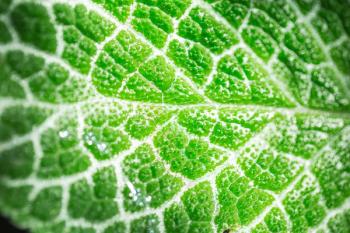
Drones and Satellites Used to Map Wetland Water Quality in Coastal River Delta
Key Takeaways
- Drones and satellites enable dynamic monitoring of chlorophyll-a and total nitrogen in wetlands, improving spatial coverage and speed over traditional methods.
- New three-band indices derived from hyperspectral data enhance detection of subtle optical differences related to chlorophyll and nitrogen.
Researchers have developed a new method combining unmanned aerial vehicle (UAV) hyperspectral imaging with satellite data to monitor chlorophyll-a (Chla) and total nitrogen (TN) concentrations in coastal wetland waters. Their approach enhances the precision and scalability of water quality assessments, providing a model for managing eutrophication in fragile ecosystems.
A New Perspective on Water Quality
A research team led by Sihan Peng, Nisha Bao, Nuo Gu, Huiya Qian, Zisong Han, Bin Zhou, and Le Chang from Northeastern University (Shenyang, China), the Changchun Surveying and Mapping Institute (Changchun, China), and the Liaoning Ecological Meteorology and Satellite Remote Sensing Centre (Shenyang, China) has demonstrated how drones and satellites can work in tandem to track nutrient pollution in wetlands. Their findings, published in Environmental Technology & Innovation (1), present an innovative framework for dynamic monitoring of chlorophyll-a and total nitrogen, two key indicators of eutrophication.
The study focused on the Liao River Delta (LRD), one of China’s largest coastal wetlands, where oil extraction and aquaculture have accelerated ecological degradation. Traditional laboratory methods for assessing water quality, while accurate, are slow and limited in spatial coverage. The new approach uses hyperspectral spectroscopy to remotely detect optical signals in the water, enabling rapid and wide-area assessments of soil, plant, or water chemistry (1,2)
Hyperspectral Vision: Seeing Beyond Color
Using a DJI Matrice 600 Pro UAV equipped with a Pika L hyperspectral imager (Resonon Inc), the researchers captured fine-scale reflectance data across the 380–1000 nm visible-near-infrared (vis-NIR) range at 4 nm resolution. This dataset revealed spectral signatures associated with Chla and TN concentrations. Peaks near 650 nm, 700 nm, and 810 nm were linked to algal pigments, while dips around 670 nm indicated chlorophyll absorption (1).
From these spectra, the team derived two new three-band indices (1):
- TBIChla = [1/R(682 nm) − 1/R(691 nm)] × R(763 nm)
- TBITN = [1/R(721 nm) – 1/R(674 nm)] × R(969 nm)
These indices amplified subtle differences in reflectance caused by chlorophyll and nitrogen-related optical properties. According to the authors, the TBIChla model achieved an R² = 0.88 with a root mean square error (RMSE) of 0.0037 mg/L, while TBITN resulted in an R² = 0.86 and RMSE of 0.1727 mg/L (1).
The analysis confirmed that chlorophyll-a’s optical activity, with absorption peaks at 440 nm and 670 nm and a fluorescence maximum near 700 nm, drives strong correlations with nitrogen levels, allowing indirect estimation of TN through its effect on water color and reflectance spectra (1).
From UAV to Satellite Requires Expanding the Scale
Once the spectral models were validated using 102 water samples collected from the Liao River system, they were transferred to Gaofen-5B (GF-5B) satellite imagery. The GF-5B hyperspectral sensor, with 330 contiguous spectral bands (400–1000 nm, 5 nm resolution), provided large-scale and multi-seasonal views from the years 2022 to 2024 (1).
To ensure accurate satellite-based retrievals, four atmospheric correction (AC) methods: dark object subtraction (DOS), quick atmospheric correction (QUAC), fast line-of-sight atmospheric analysis of spectral hypercubes (FLAASH), and second simulation of a satellite signal in the solar spectrum (6S), were compared. The QUAC algorithm yielded the most reliable alignment with UAV data, enabling consistent mapping of Chla and TN concentrations across the delta (1).
The study revealed clear seasonal and spatial trends. Urban areas affected by oil extraction exhibited elevated chlorophyll-a, indicating nutrient enrichment, while total nitrogen levels peaked in autumn during aquaculture “fattening” cycles. The integration of UAV and GF-5B data not only improved spectral accuracy but also allowed fine-scale ecological monitoring over broad geographic areas.
Spectroscopy Meets Ecology
The hyperspectral approach leverages fine spectral resolution to detect absorption valleys and backscattering features that correspond to specific biogeochemical constituents. By identifying reflectance inflections near 670–700 nm, associated with phytoplankton pigments, and using red-edge bands beyond 720 nm, the researchers could quantify the extent of eutrophication (1).
The incorporation of hue angle as an auxiliary parameter—derived from water color metrics—further improved TN predictions. This innovation reflects a growing trend in spectroscopic modeling, where traditional regression is enhanced by machine learning and colorimetric descriptors to improve robustness across varying aquatic conditions.
Toward Real-Time Environmental Management
According to Peng and colleagues, their integrated UAV–satellite system bridges the gap between local high-precision data and regional-scale monitoring, providing a scalable tool for early detection of pollution hotspots. Validation with data from national control water stations confirmed high consistency with observed TN concentrations, with average urban prediction errors around 15% (1).
The authors conclude that this framework can be adapted for real-time water quality monitoring and early warning systems, offering a model for managing wetland health amid rapid industrial and agricultural development. Future work aims to extend the technique to other parameters such as total phosphorus and dissolved oxygen to build a comprehensive environmental surveillance network.
References
(1) Peng, S.; Bao, N.; Gu, N.; Qian, H.; Han, Z.; Zhou, B.; Chang, L. Enhanced Assessment of Chlorophyll-a and Total Nitrogen Dynamics Using Unmanned Aerial Vehicle-Based Model and Hyperspectral Imagery in Coastal Wetland Water. Environ. Technol. Innov. 2025, 104521. DOI:
(2)Yang, M.; Qin, J.; Wang, X.; Gu, Y. Research on the Wetland Vegetation Classification Method Based on Cross-Satellite Hyperspectral Images. J. Mar. Sci. Eng. 2025, 13, 801. DOI:
Newsletter
Get essential updates on the latest spectroscopy technologies, regulatory standards, and best practices—subscribe today to Spectroscopy.





